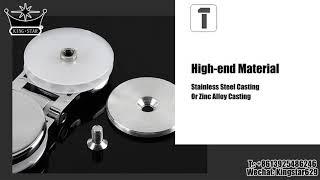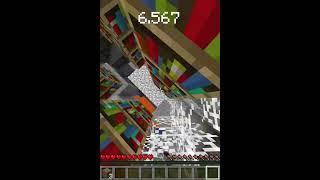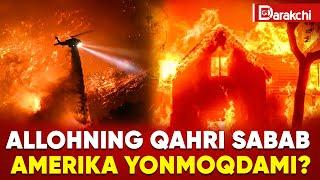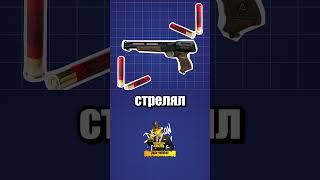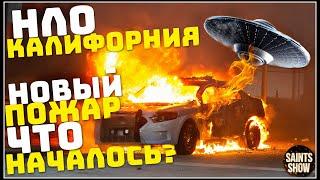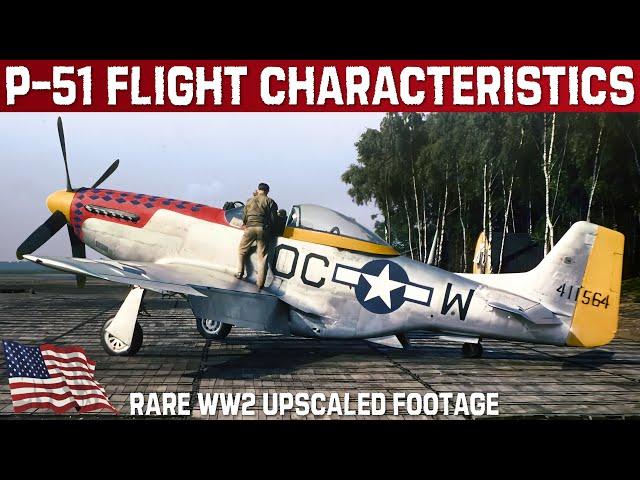
P-51 MUSTANG: Flight Characteristics | Rare Upscaled WW2 Training Film And Interviews
Flight characteristics of the North American P-51 Mustang. Restored and upscaled rare training footage, interviews with legendary WW2 pilot Bud Anderson, including the P-51 walkaround, and a P-51 documentary with veteran interviews.
The North American Aviation P-51 Mustang is an American long-range, single-seat fighter and fighter bomber used during World War II and the Korean War, among other conflicts. The Mustang was designed in April 1940 by a team headed by James H. Kindelberger of North American Aviation (NAA) in response to a requirement of the British Purchasing Commission. The Purchasing Commission approached North American Aviation to build Curtiss P-40 fighters under license for the Royal Air Force (RAF). Rather than build an old design from another company, North American Aviation proposed the design and production of a more modern fighter. The prototype NA-73X airframe was rolled out on 9 September 1940, 102 days after the contract was signed, and first flew on 26 October.
The Mustang was designed to use the Allison V-1710 engine, which had limited high-altitude performance in its earlier variants. The RAF first flew the aircraft operationally as a tactical-reconnaissance aircraft and fighter bomber (Mustang Mk I). Replacing the Allison with a Rolls-Royce Merlin resulted in the P-51B/C (Mustang Mk III) model. It transformed the aircraft's performance at altitudes above 15,000 ft (4,600 m) (without sacrificing range), allowing it to compete with the Luftwaffe's fighters. The definitive version, the P-51D, was powered by the Packard V-1650-7, a license-built version of the two-speed, two-stage-supercharged Merlin 66, and was armed with six .50 caliber (12.7 mm) AN/M2 Browning machine guns.
At the start of the Korean War, the Mustang, by then redesignated F-51, was the main fighter of the United States until jet fighters, including North American's F-86, took over this role; the Mustang then became a specialized fighter-bomber. Despite the advent of jet fighters, the Mustang remained in service with some air forces until the early 1980s. After the Korean War, Mustangs became popular civilian warbirds and air racing aircraft.
North American Aviation (NAA) was already supplying its T-6 Texan (known in British service as the "Harvard") trainer to the RAF but was otherwise underused. NAA President "Dutch" Kindelberger approached Self to sell a new medium bomber, the North American B-25 Mitchell. Instead, Self asked if NAA could manufacture P-40s under license from Curtiss. Kindelberger said NAA could have a better aircraft with the same Allison V-1710 engine in the air sooner than establishing a production line for the P-40.
Specifications (P-51D Mustang)
3-view drawing of P-51D Mustang
Nose of P-51 Gunfighter
Wing with three .50 caliber machine guns
Data from Erection and Maintenance Manual for P-51D and P-51K, P-51 Tactical Planning Characteristics & Performance Chart, The Great Book of Fighters, and Quest for Performance
General characteristics
Crew: 1
Length: 32 ft 3 in (9.83 m)
Wingspan: 37 ft (11 m)
Height: 13 ft 4.5 in (4.077 m) tail wheel on the ground, vertical propeller blade
Wing area: 235 sq ft (21.8 m2)
Aspect ratio: 5.83
Airfoil: NAA/NACA 45–100
Empty weight: 7,635 lb (3,463 kg)
Gross weight: 9,200 lb (4,173 kg)
Max takeoff weight: 12,100 lb (5,488 kg) 5,490
Fuel capacity: 269 US gal (224 imp gal; 1,020 l)
Zero-lift drag coefficient: 0.0163
Drag area: 3.80 sqft (0.35 m²)
Powerplant: 1 × Packard (Rolls Royce) V-1650-7 Merlin 12-cylinder liquid-cooled engine, 1,490 hp (1,110 kW) at 3,000 rpm 1,720 hp (1,280 kW) at WEP
Propellers: 4-bladed Hamilton Standard constant-speed, variable-pitch, 11 ft 2 in (3.40 m) diameter
Performance
Maximum speed: 440 mph (710 km/h, 383 kn)
Cruise speed: 362 mph (583 km/h, 315 kn)
Stall speed: 100 mph (160 km/h, 87 kn)
Range: 1,650 mi (2,660 km, 1,434 nmi) with external tanks
Service ceiling: 41,900 ft (12,800 m)
Rate of climb: 3,200 ft/min (16 m/s)
Lift-to-drag: 14.6
Wing loading: 39 lb/sq ft (190 kg/m2)
Power/mass: 0.18 hp/lb (300 W/kg)
Recommended Mach limit 0.8
Armament
Guns: 6 × .50 caliber (12.7mm) AN/M2 Browning machine guns with 1,840 total rounds (380 rounds for each on the inboard pair and 270 rounds for each of the outer two pairs)
Rockets: 6 or 10 × 5.0 in (127 mm) T64 HVAR rockets (P-51D-25, P-51K-10 on)
Bombs: 1 × 100 lb (45 kg) or 250 lb (110 kg) bomb or 500 lb (230 kg) bomb on hardpoint under each wing
Watch more aircraft, heroes, and their stories, and missions ➤ https://www.youtube.com/@Dronescapes
To support/join the channel ➤ https://www.youtube.com/@Dronescapes/join
IG ➤ https://www.instagram.com/dronescapesvideos
FB ➤ https://www.facebook.com/Dronescapesvideos
X/Twitter ➤ https://dronescapes.video/2p89vedj
THREADS ➤ https://www.threads.net/@dronescapesvideos
#p51 #p51mustang #fighteraircraft
The North American Aviation P-51 Mustang is an American long-range, single-seat fighter and fighter bomber used during World War II and the Korean War, among other conflicts. The Mustang was designed in April 1940 by a team headed by James H. Kindelberger of North American Aviation (NAA) in response to a requirement of the British Purchasing Commission. The Purchasing Commission approached North American Aviation to build Curtiss P-40 fighters under license for the Royal Air Force (RAF). Rather than build an old design from another company, North American Aviation proposed the design and production of a more modern fighter. The prototype NA-73X airframe was rolled out on 9 September 1940, 102 days after the contract was signed, and first flew on 26 October.
The Mustang was designed to use the Allison V-1710 engine, which had limited high-altitude performance in its earlier variants. The RAF first flew the aircraft operationally as a tactical-reconnaissance aircraft and fighter bomber (Mustang Mk I). Replacing the Allison with a Rolls-Royce Merlin resulted in the P-51B/C (Mustang Mk III) model. It transformed the aircraft's performance at altitudes above 15,000 ft (4,600 m) (without sacrificing range), allowing it to compete with the Luftwaffe's fighters. The definitive version, the P-51D, was powered by the Packard V-1650-7, a license-built version of the two-speed, two-stage-supercharged Merlin 66, and was armed with six .50 caliber (12.7 mm) AN/M2 Browning machine guns.
At the start of the Korean War, the Mustang, by then redesignated F-51, was the main fighter of the United States until jet fighters, including North American's F-86, took over this role; the Mustang then became a specialized fighter-bomber. Despite the advent of jet fighters, the Mustang remained in service with some air forces until the early 1980s. After the Korean War, Mustangs became popular civilian warbirds and air racing aircraft.
North American Aviation (NAA) was already supplying its T-6 Texan (known in British service as the "Harvard") trainer to the RAF but was otherwise underused. NAA President "Dutch" Kindelberger approached Self to sell a new medium bomber, the North American B-25 Mitchell. Instead, Self asked if NAA could manufacture P-40s under license from Curtiss. Kindelberger said NAA could have a better aircraft with the same Allison V-1710 engine in the air sooner than establishing a production line for the P-40.
Specifications (P-51D Mustang)
3-view drawing of P-51D Mustang
Nose of P-51 Gunfighter
Wing with three .50 caliber machine guns
Data from Erection and Maintenance Manual for P-51D and P-51K, P-51 Tactical Planning Characteristics & Performance Chart, The Great Book of Fighters, and Quest for Performance
General characteristics
Crew: 1
Length: 32 ft 3 in (9.83 m)
Wingspan: 37 ft (11 m)
Height: 13 ft 4.5 in (4.077 m) tail wheel on the ground, vertical propeller blade
Wing area: 235 sq ft (21.8 m2)
Aspect ratio: 5.83
Airfoil: NAA/NACA 45–100
Empty weight: 7,635 lb (3,463 kg)
Gross weight: 9,200 lb (4,173 kg)
Max takeoff weight: 12,100 lb (5,488 kg) 5,490
Fuel capacity: 269 US gal (224 imp gal; 1,020 l)
Zero-lift drag coefficient: 0.0163
Drag area: 3.80 sqft (0.35 m²)
Powerplant: 1 × Packard (Rolls Royce) V-1650-7 Merlin 12-cylinder liquid-cooled engine, 1,490 hp (1,110 kW) at 3,000 rpm 1,720 hp (1,280 kW) at WEP
Propellers: 4-bladed Hamilton Standard constant-speed, variable-pitch, 11 ft 2 in (3.40 m) diameter
Performance
Maximum speed: 440 mph (710 km/h, 383 kn)
Cruise speed: 362 mph (583 km/h, 315 kn)
Stall speed: 100 mph (160 km/h, 87 kn)
Range: 1,650 mi (2,660 km, 1,434 nmi) with external tanks
Service ceiling: 41,900 ft (12,800 m)
Rate of climb: 3,200 ft/min (16 m/s)
Lift-to-drag: 14.6
Wing loading: 39 lb/sq ft (190 kg/m2)
Power/mass: 0.18 hp/lb (300 W/kg)
Recommended Mach limit 0.8
Armament
Guns: 6 × .50 caliber (12.7mm) AN/M2 Browning machine guns with 1,840 total rounds (380 rounds for each on the inboard pair and 270 rounds for each of the outer two pairs)
Rockets: 6 or 10 × 5.0 in (127 mm) T64 HVAR rockets (P-51D-25, P-51K-10 on)
Bombs: 1 × 100 lb (45 kg) or 250 lb (110 kg) bomb or 500 lb (230 kg) bomb on hardpoint under each wing
Watch more aircraft, heroes, and their stories, and missions ➤ https://www.youtube.com/@Dronescapes
To support/join the channel ➤ https://www.youtube.com/@Dronescapes/join
IG ➤ https://www.instagram.com/dronescapesvideos
FB ➤ https://www.facebook.com/Dronescapesvideos
X/Twitter ➤ https://dronescapes.video/2p89vedj
THREADS ➤ https://www.threads.net/@dronescapesvideos
#p51 #p51mustang #fighteraircraft
Тэги:
#p51_fighter_aircraft #p51_fighter_plane #mustang_p51d #mustang_p51 #p51_mustang #p51d_mustang #P51 #P-51 #p-51d_mustang #p51_mustang_documentary #p51_fighter_jet #mustang_p_51 #p-51_mustang #north_american_p-51_mustang #mustang_plane #p_51_mustang #mustang_airplane #p_51 #p51_combat_fighter #p51_vs_me_262 #world_war_ii #world_war_2 #world_war_ii_history #veteran_pilot #ww2_stories #wwii_plane #wwii_documentary #ww2_aircraft #Ww2_planes #AdKey:wQJgjY73P-nW3zКомментарии:
22 May 2024
Astro Shaw
Combination Use of Small Glass Hinges and Glass Door Lock
Kingstar Door Hardware
【MV首播】張秀卿 - 請你珍惜我 (官方完整版MV) HD 【三立八點檔『天之驕女』片尾曲】
豪記唱片 HCM Music
PUBG OLD MEMORIES - On My Way • Old Erangel
Ashmit Playz
Daryl Hall & John Oates - You've Lost That Lovin' Feeling (Official Video)
Daryl Hall & John Oates
Losing Your Hardcore Minecraft World
SpicyWontonbad2
Top 15 Isekai/Fantasy Anime with Overpowered MC
Otaku Recommends




